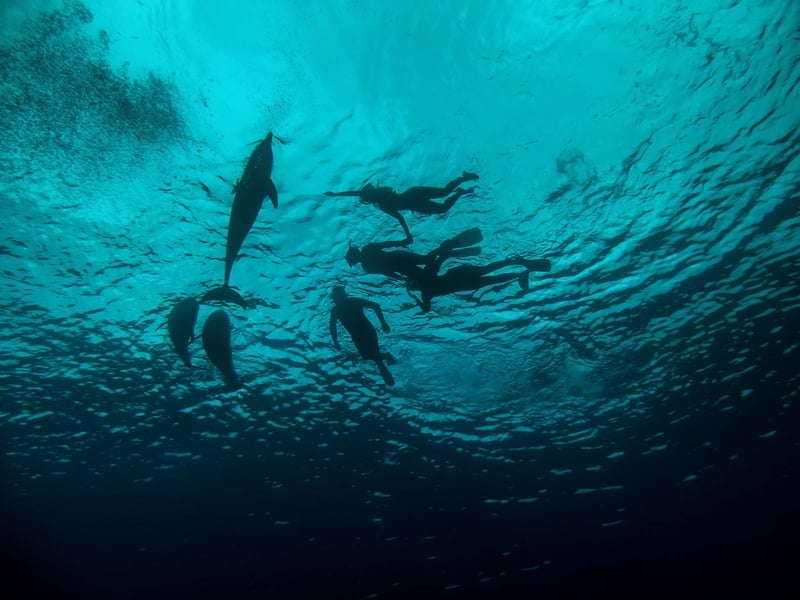
As global travelers and wildlife enthusiasts, we have a responsibility to respect and protect the natural world, particularly in the places we visit. With more and more people traveling to see marine life up close to get that ever-important selfie with ocean animals, we must approach these experiences with a sustainable and responsible mindset.
This writer recently toured the incredible El Nido region on the island of Palawan, in the Philippines. We visited a place called "Hidden Beach" recently ranked the 4th best beach in the world (meaning it's probably not going to stay hidden for much longer). During the visit, there was a steady stream of tourist boats coming and going. To reach this paradise, we had to traverse rocks and coral (I did my best to swim over the coral rather than step on it) and we swam through a cave to get to the beach.
Then, while I was snorkeling in very shallow salt water off the beach, I started following a colorful fish, as many of us would. Suddenly, it turned and charged me, headbutting my goggles! Startled, I headed back to the beach but didn't think much more of it. Later, upon reflection, I realized the fish must have been annoyed with the continuous intrusion upon its home and people chasing it! The experience has certainly got me rethinking my own interactions with sea life and keeping a respectful distance.
The Cost of Tourism
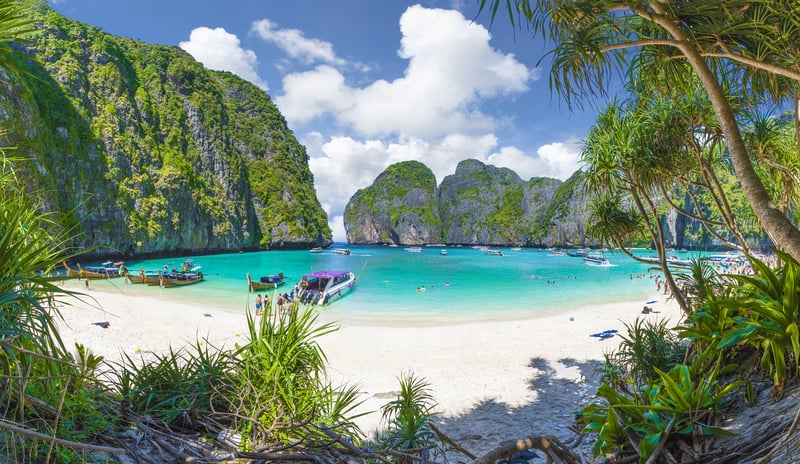
The Philippines’ government closed down the popular Boracay Island and famous White Beach (another consistently ranked best in the world) due to over-tourism in 2018. During the same year, the Thai government also closed the hugely popular Maya Beach, made famous by the movie The Beach, to allow time for marine life and marine ecosystems to recover, and it stayed closed for a whopping four years!
With the advent of social media and Insta-obsession, more people are seeking out these (lost) paradises more than ever. However, because tourism plays a vital role in the economies of countries like the Philippines and Thailand, they don’t want to shut tourists out...there's a delicate balance required. How do we continue to enjoy the world's sea animals without disturbing them to the point where they want to charge and headbutt our goggles? The answer lies in a collection of practices termed "ocean etiquette.'
What is Ocean Etiquette?
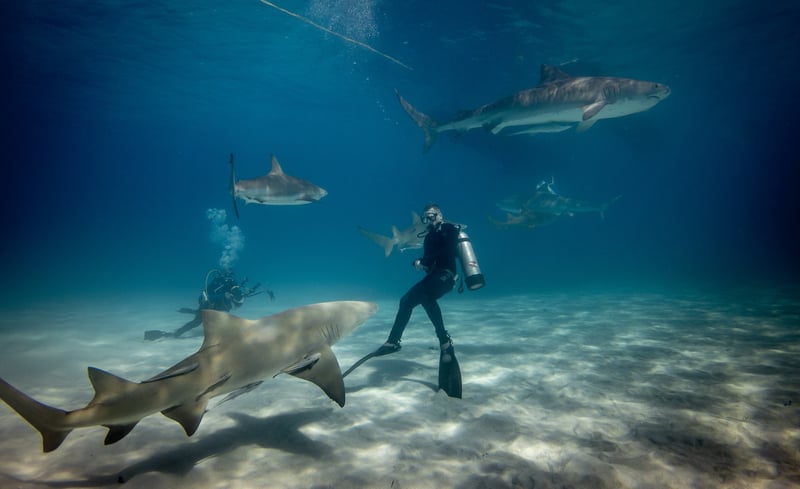
Whether you're swimming up estuaries with dolphins in Hawaii or snorkeling with sea turtles in the Great Barrier Reef, there are a few key things to keep in mind to ensure that your interactions with these animal life forms are sustainable and respectful. The National Ocean Service lists a few rules of thumb for responsible encounters with sea animals in their marine habitats.
Some of these include:
- Look but don't touch: Never touch or handle marine life. As well as potentially harming the animal, it puts you at risk.
- Do not feed: This rule is broken way too often by tour operators and tourists trying to attract ocean animals. While it may seem fun at the moment, this can actually hurt or kill the animal you're feeding, or make it dependent on humans.
- Never chase or harass wildlife: Like any animal species, if feeling trapped or threatened, their fight-or-flight instinct will kick in.
- Keep your distance: Keep a safe and respectful distance from wildlife at all times to ensure you are not disrupting natural behaviors.
Now that we've covered some of the guidelines of how to approach aquatic wildlife interactions with respect and safety in mind, let's dive into some of our favorite responsible experiences you can have with the many ocean animals and locations around the world and how to choose ethical tour operators to minimize your impact on the animals and their environment.
Whale Sharks - Cebu, Philippines
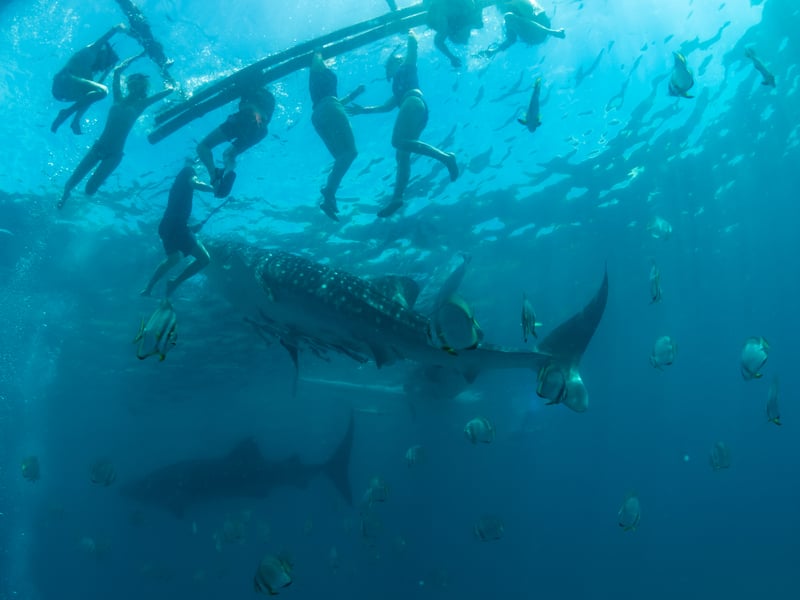
Whale sharks have to be one of the most incredible ocean animals to see up close. Being dwarfed by these gentle giants is on many a traveler's bucket list. While there are a few places around the world to see and swim with whale sharks, including Ningaloo Reef in Western Australia and the Yucatan Peninsula in Caribbean Mexico, we have chosen to examine practices in the Philippines, where there are both ethical and less-than-ethical operations going on for whale shark tourism.
Many tourists flock to Oslob on the island of Cebu to swim with whale sharks. However, sometimes irresponsible practices occur here, such as feeding the whale sharks, which affects their natural feeding habits and migratory patterns. The whale sharks have also learned over time to equate boats with food and often injure themselves when colliding with them. Be sure to choose a responsible operator in this area.
One of the more ethical spots to swim with whale sharks is Sogod Bay at the southern end of the nearby island of Leyte. The tour operators here are run by a local NGO, LAMAVE (Large Marine Vertebrates Research Institute), which operates based on sustainable regulations and ethical practices designed to help protect and preserve marine life. As a result, whale sharks flourish here and there are far fewer tourists than Oslob. The downside is Sogod Bay is harder to get to, but it's worth it.
Other Sea Animals of Cebu:
- Green turtles and hawksbill turtles
- Groupers
- Octopus
- Butterflyfish
- Stingrays
- Porcupine fish
- Horseshoe crabs
Sea Turtles - Galapagos Islands, Ecuador
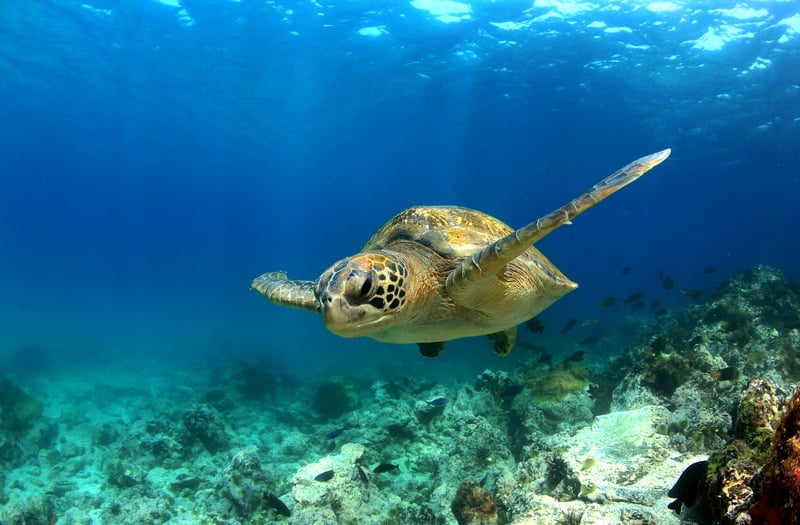
There are plenty of places around the world where you can swim with sea turtles, including the Great Barrier Reef in Australia, Cozumel in Mexico and Turtle Beach in Hawaii. Our favorites are the green sea turtles of the Galapagos Islands due to their super-chilled nature. The Galapagos green sea turtle is a subspecies only found in this incredibly biodiverse archipelago.
An excellent and responsible way to see these magnificent creatures is simply by snorkeling and diving in Quinta Playa on Isabella Island. This is the only place they can nest and lay their eggs, making this colony the largest in the east Pacific Ocean (and pretty much guaranteeing you a chance to spot them). These calm aquatic animals are completely unfazed as you swim around them, making it easy to get pics. That said, do not surround them - maintain a distance of three to five meters and keep your hands off.
In the Galapagos Islands, you can also see the leatherback, hawksbill and olive ridley turtles, as well as the famous giant tortoise on land.
Other Sea Animals of Galapagos Islands:
- Dolphins
- Sharks
- Whales
- Sea lions
- Penguins
- Fur seals
- Rays
- Tropical fishes
Sea Lions - Baja California, Mexico

Many claim snorkeling with sea lions to be more exciting than with larger marine species such as whales. After all, the sea lion's nickname is dog of the sea, and they certainly live up to it, being extremely playful with human encounters.
Sea lions are generally much larger than seals and can almost walk on land due to their longer flippers, whereas seals have to wriggle along on their bellies. The Baja California Coast in Mexico is an excellent place to encounter these lovable marine mammals. Off the coast of La Paz in the Sea of Cortez is a group of islands and a UNESCO bio-reserve which is one of Mexico's leading eco-tourism destinations.
Within the reserve is a small rocky island called Isla Lobos, home to a large colony of sea lions. The area is highly regulated and you must use a local vendor from La Paz to gain a wristband and pay the National Park fee. This is great because it means not many people get to Isla Lobos, allowing you to spend quality time with these curious creatures.
Other Sea Animals of Baja California:
- Whale sharks
- Sea otters
- Gray whale
- Common bottlenose dolphin
- Guadalupe fur seal
- Sea turtles
Clownfish - The Great Barrier Reef, Australia
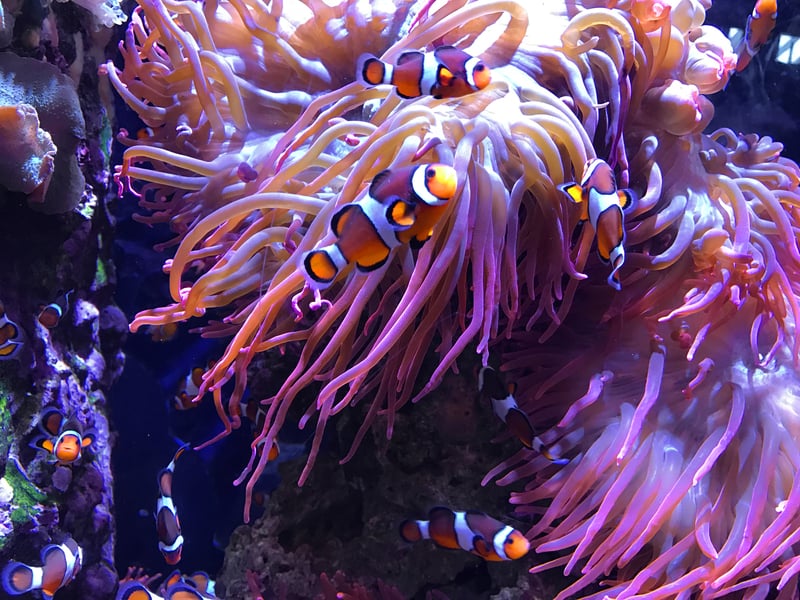
A great one for kids and adults alike -- anyone who has seen the beloved movie Finding Nemo (one of our favorite films that inspire travel) will be familiar with the clownfish. The Great Barrier Reef was the setting for that film, and for good reason as you can find these colorful fish all throughout this massive marine environment at the western edge of the Pacific Ocean. Some of the best places to see the clownfish in the Great Barrier Reef are the incredibly scenic Magnetic Island, Heron Island and the Whitsunday Islands.
The clownfish has a symbiotic relationship with the sea anemones (pictured), their home in the coral reefs. The sea anemone is highly toxic to other fish, but not the clownfish. Therefore, the sea anemone provides protection for the clownfish. The clownfish also uses its bright colors to draw other fish into the sea anemone which die from its toxins, providing food for it. Now that's a win-win partnership!
Other Sea Animals of The Great Barrier Reef:
- Sharks
- Sea turtles
- Manta rays
- Whales
- Humphead wrasse
- Giant clam
- Dugong
- Sea snakes
- Sea urchins
- Coral reefs
Giant Pacific Octopus - Vancouver Island, Canada
%20moving%20around%20in%20his%20habitat.jpg?width=800&height=610&name=Giant%20Pacific%20octopus%20(Enteroctopus%20dofleini)%20moving%20around%20in%20his%20habitat.jpg)
As if there aren't already enough reasons to visit Vancouver, one of the world's most beautiful cities, you can also dive to view one of the world's most intelligent creatures (some experts say very similar to humans), the octopus. And not just any octopus, but the biggest of them all – the giant Pacific octopus. These deep-sea octopuses from the Pacific Ocean are known to be able to complete puzzles, untie knots, and are expert escape artists.
There is an excellent shore dive at Madrona Point on Vancouver Island, where you can see the largest number of giant Pacific octopuses on the ocean floor. There is a rock formation with deep crevices at dark depths that the octopuses hide in, though you must be a certified advanced diver to dive the deep wall to see these remarkable ocean animals.
It's important to give them space. The octopus will come out of its hiding place if you back up, turn off your lights and let it take its time. If the octopus initiates an interaction, hold onto your mask, regulator and camera, as they like shiny things and might try to take them!
Other Ocean Animals of Vancouver Island:
- Whales (humpback and orcas)
- Pacific white-sided dolphin
- Harbor porpoise
- Stellar sea lion
- Marine worms such as horseshoe worms
- Horseshoe crabs
Dolphins - The Bahamas
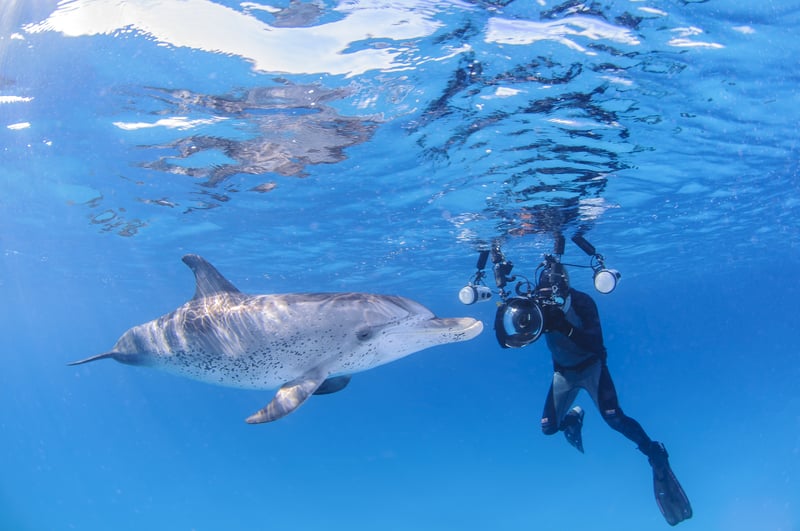
Who doesn't like dolphins? These highly intelligent and playful sea animals can be found all over the world's oceans. We could list several other ocean habitats where you can ethically interact with dolphins, however, we are choosing the Bahamas due to the dolphins’ unique relationship with the locals.
The dolphins here have lived in close contact with Bahamians for generations and thus are super-confident within their environment. Nassau and Freeport are known to offer some of the best (and most ethical) dolphin encounters in the world. If you find yourself in The Bahamas, you must visit the famous Blue Lagoon. Besides having some of the best beaches and watersports in The Bahamas, it is home to a world-class dolphin encounter.
Blue Lagoon Island is a dolphin sanctuary that was given a Humane Certified seal of approval after a rigorous third-party audit. They have been running dolphin encounters since 1989 and have been featured in film and television, including the latest Flipper movie. Here, you are first educated about the majestic marine mammals. Then, you can wallow in crystal clear shallow water and have dolphins come right up to you. You can even touch, hug and rub their bellies, which is rare for ethical dolphin encounters.
Other Ocean Animals of The Bahamas:
- Sharks
- Manta rays
- Stingrays
- Lionfish
- Blue marlin
- Starfish
Emperor Penguins - Antarctica
![]()
Penguins come in many shapes and sizes and can be found in various locations throughout the world. The smallest species, the fairy penguin, lives in Australia and can be found in Sydney Harbour. At the other end of the scale is Antarctica’s emperor penguin species, the tallest and heaviest.
Some of the most visually striking among their kind, emperor penguins boast gorgeous coloring with distinctive yellow and orange hues on their face and beaks. They are also devoted to family, being completely monogamous, and the father doing his equal share of nursing the offspring. If that isn't impressive enough, they have one of the strongest senses of community in the entire wildlife kingdom.
The best place to witness this community is at Snow Hill Island in the Weddell Sea off the east coast of the Antarctic Peninsula, where there is an approximate population of 10,000 emperor penguins in one place. To reach this quite isolated location, you will need to join a tour organized by a company like Quark Expeditions, which knows the best times of year to see the penguin species.
Other Ocean Life of Antarctica:
- Adélie penguin
- Chinstrap penguin
- Humpback whale
- Baleen whales
- Weddell seal
- Antarctic fur seal
Humpback Whales - Moorea, French Polynesia
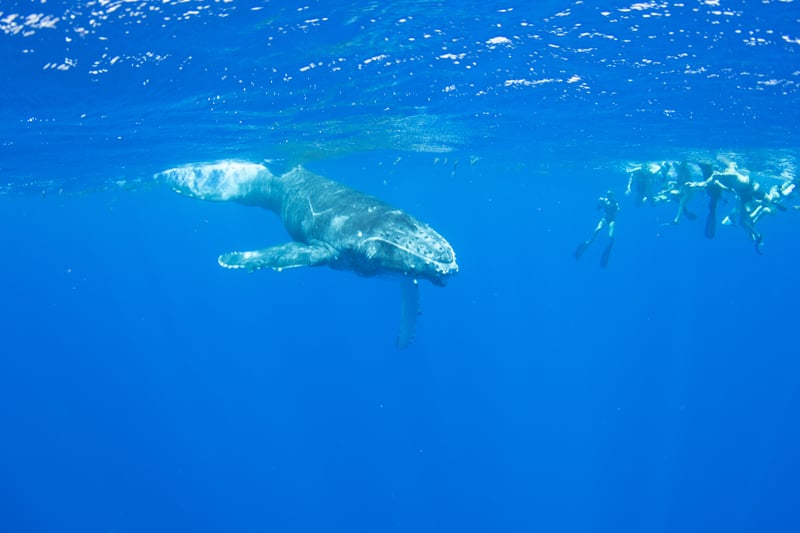
Every year between July and November, humpback whales migrate from the chilly waters of the Antarctic to the warm waters of Tahiti for some ‘honeymooning’ and to give birth. You can not only spot one of the world's largest living animals but swim with them, too (at a distance, of course). Not bad considering these gentle giants can grow up to 60ft (18m)!
French Polynesia is arguably the best place in the world for snorkeling with humpback whales due to the warm and clear blue waters. Most similar experiences are in cold and darker waters. Moreover, French Polynesia is the largest marine mammal Sanctuary in the world, protecting 20 species of whales and dolphins in the area. As a result, you can rest assured all your whale, shark and dolphin encounters here are responsible and ethical.
Other Marine Life of French Polynesia:
- Coral reef
- Sea horses
- Reef sharks
- Tiger sharks
- Sea cucumbers
Dugong (a.k.a. sea cow) - The Red Sea, Egypt
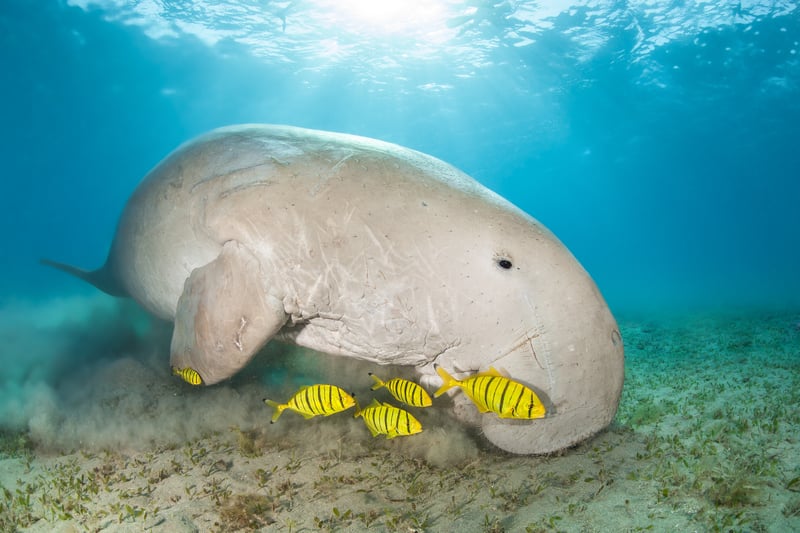
The dugong, also known as a “sea cow”, comes from the same family as the manatee, though the two closely related marine mammals are separated by the world's oceans. As with many of the species on this list, there are multiple places you can dive with dugongs throughout the world. Our favorite is the Red Sea, a world-renowned diving region with incredible visibility.
One place where you may spot these rather funny-looking sea animals is Marsa Alam, an increasingly popular destination on the Red Sea's western shore in Egypt. About 30km (19 miles) from Marsa Alam is Abu Dabbab Bay, a lagoon with shallow waters known for dugong sightings. They love this area due to the seagrass which they feed on. Unfortunately, the number of dugongs has decreased over the years in the Red Sea's coastal waters, so consider yourself lucky if you see one. If not, there is an abundance of other sea animals to swim with.
Other Sea Animals of the Red Sea:
- Coral reefs
- Spinner dolphins
- Turtles
- Mantas
- Sharks
- Marine invertebrates
Manta Rays - Hanifaru Bay, The Maldives
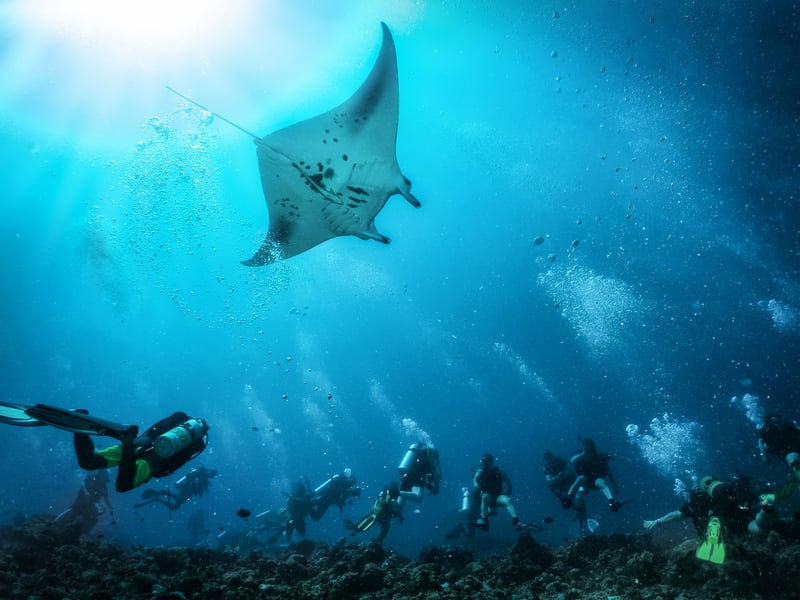
Manta rays are the "nice" kind of rays that don't sting you. Manta rays are much larger (and friendlier) than stingrays and are known to have pleasant interactions with humans. One of the most famous places in the world to do this is Hanifaru Bay in The Maldives. The bay is part of the Baa Atol, a UNESCO biosphere reserve legally designated as a Marine Protected Area, so you can ensure all your manta ray encounters are ethical and responsible.
Manta rays are among the largest living animals in the ocean, with some growing a wingspan of up to 7ft and weighing as much as 2 tons! Like many ocean animals on this list that are inquisitive about humans, manta rays are intelligent, with the largest brain-to-body weight ratio of all fish.
All the resorts in Hanifaru Bay provide highly regulated tours to swim and snorkel up close with the manta rays. They are all run by licensed tour guides with special rules to ensure the manta rays are kept at peace while you can still enjoy getting up close and personal with them. The rule of thumb, which applies to all sea life encounters, is not to chase them, but let them come to you.
Other Sea Life of the Maldives:
- Whale sharks
- Blue whale
- Triggerfish
- Stingray
- Coral reefs
- Moray eels
- Sea slug
- Hermit crabs
Great White Sharks - Cape Town, South Africa

Ready to get your adrenalin pumping? Then cage diving to see the great white shark up close is a bucket-list experience. There are only a few places worldwide where you can dive with these impressive creatures, including South Australia and Baja California in Mexico. As we've already featured the previous two, we are going with Cape Town in the southern ocean (an awesome city to visit even before you get to the sharks).
You can head to the picturesque Simon's Town, about a half-hour drive down the Cape from downtown. While you're there, you can stop by beautiful Boulder's Beach to see the colony of penguins. There are several tour companies in Simon's Town, one such being Shark Explorers, who will take you out to False Bay and Seal Island where you can do a cage dive for an almost guaranteed great white shark sighting. Seeing this prehistoric predator up close baring its sharp teeth for the first time is bound to be an experience you'll never forget!
Other Sea Life of Cape Town:
- Bronze whaler shark
- Sevengill shark
- Fur seals
- Dolphins
- Whales
Manatees - Crystal River, Florida USA
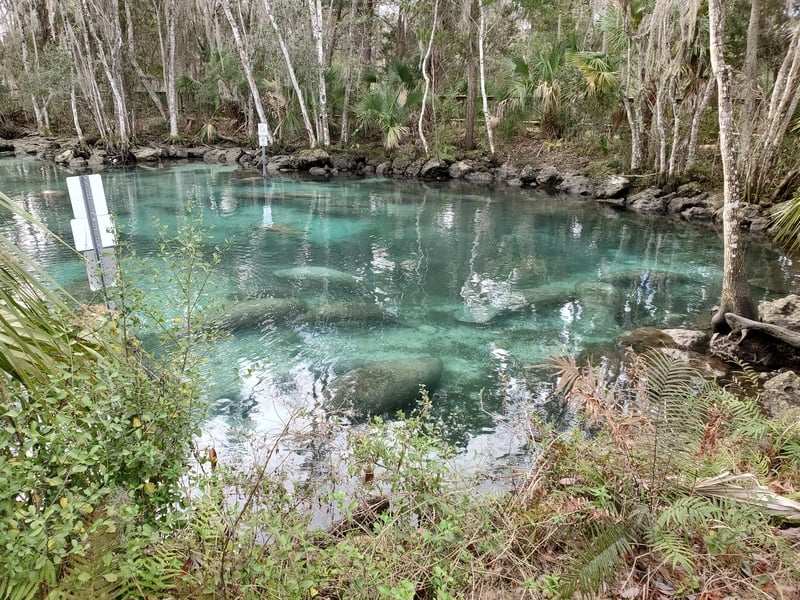
We can’t finish with the terrifying great white shark, so here’s a more laid-back but equally awe-inspiring experience. Remember the funny-looking Dugong? Well, it has an equally funny-looking cousin on the other side of the world…the manatee. There’s only one place in the USA where you can legally swim with these friendly giants: the Crystal River in Florida.
It’s aptly called Crystal River because of its crystal-clear spring waters, making for excellent visibility to view the manatee. The manatees flock here during the winter months from the Gulf of Mexico, the peak season being from November through April.
There are several tours that will take you to manatee hotspots such as Homosassa Springs and Three Sisters Springs. You can kayak, paddleboard and snorkel with the manatees. Can you touch them? Yes, however, the US Fish and Wildlife Service has established strict regulations to ensure responsible interactions with the manatee. These include:
- One hand is used only to touch the manatee on the back or stomach
- Never approaching a resting or feeding manatee
- No chasing, splashing or provoking a manatee
We hope you’ve enjoyed this trip around the world looking at some of the best opportunities to responsibly interact with marine life. If this post has inspired you to start planning travel to see some of the animals above, you can find more (land-based) ideas in our blog about the world’s best places to see wildlife.
About Storylines
Storylines is a community of global citizens living on MV Narrative, an eco-friendly residential luxury ship exploring all that the world has to offer. The lifestyle is active and adventurous, seeking out bucket-list experiences such as responsible encounters with the marine life discussed here. To learn more, please visit our website.


